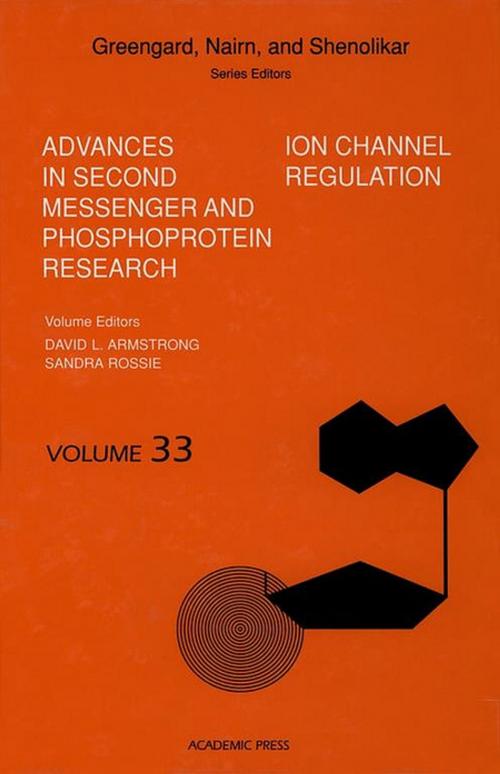Ion Channel Regulation
Nonfiction, Science & Nature, Science, Biological Sciences, Cytology, Biochemistry| Author: | Paul Greengard, Angus C. Nairn, Shirish Shenolikar, David L. Armstrong, Sandra Rossie | ISBN: | 9780080526454 |
| Publisher: | Elsevier Science | Publication: | April 13, 1999 |
| Imprint: | Academic Press | Language: | English |
| Author: | Paul Greengard, Angus C. Nairn, Shirish Shenolikar, David L. Armstrong, Sandra Rossie |
| ISBN: | 9780080526454 |
| Publisher: | Elsevier Science |
| Publication: | April 13, 1999 |
| Imprint: | Academic Press |
| Language: | English |
Volume 33 reviews the current understanding of ion channel regulation by signal transduction pathways. Ion channels are no longer viewed simply as the voltage-gated resistors of biophysicists or the ligand-gated receptors of biochemists. They have been transformed during the past 20 years into signaling proteins that regulate every aspect of cell physiology. In addition to the voltage-gated channels, which provide the ionic currents to generate and spread neuronal activity, and the calcium ions to trigger synaptic transmission, hormonal secretion, and muscle contraction, new gene families of ion channel proteins regulate cell migration, cell cycle progression, apoptosis, and gene transcription, as well as electrical excitability. Even the genome of the lowly roundworm Caenorhabditis elegans encodes almost 100 distinct genes for potassium-selective channels alone. Most of these new channel proteins are insensitive to membrane potential, yet in humans, mutations in these genes disrupt development and increase individual susceptibility to debilitating and lethal diseases.
How do cells regulate the activity of these channels? How might we restore their normal function? In Ion Channel Regulation, many of the experts who pioneered these discoveries provide detailed summaries of our current understanding of the molecular mechanisms that control ion channel activity.
- Reviews brain functioning at the fundamental, molecular level
- Describes key systems that control signaling between and within cells
- Explains how channels are used to stimulate growth and changes to activity of the nucleus and genome
Volume 33 reviews the current understanding of ion channel regulation by signal transduction pathways. Ion channels are no longer viewed simply as the voltage-gated resistors of biophysicists or the ligand-gated receptors of biochemists. They have been transformed during the past 20 years into signaling proteins that regulate every aspect of cell physiology. In addition to the voltage-gated channels, which provide the ionic currents to generate and spread neuronal activity, and the calcium ions to trigger synaptic transmission, hormonal secretion, and muscle contraction, new gene families of ion channel proteins regulate cell migration, cell cycle progression, apoptosis, and gene transcription, as well as electrical excitability. Even the genome of the lowly roundworm Caenorhabditis elegans encodes almost 100 distinct genes for potassium-selective channels alone. Most of these new channel proteins are insensitive to membrane potential, yet in humans, mutations in these genes disrupt development and increase individual susceptibility to debilitating and lethal diseases.
How do cells regulate the activity of these channels? How might we restore their normal function? In Ion Channel Regulation, many of the experts who pioneered these discoveries provide detailed summaries of our current understanding of the molecular mechanisms that control ion channel activity.
- Reviews brain functioning at the fundamental, molecular level
- Describes key systems that control signaling between and within cells
- Explains how channels are used to stimulate growth and changes to activity of the nucleus and genome















